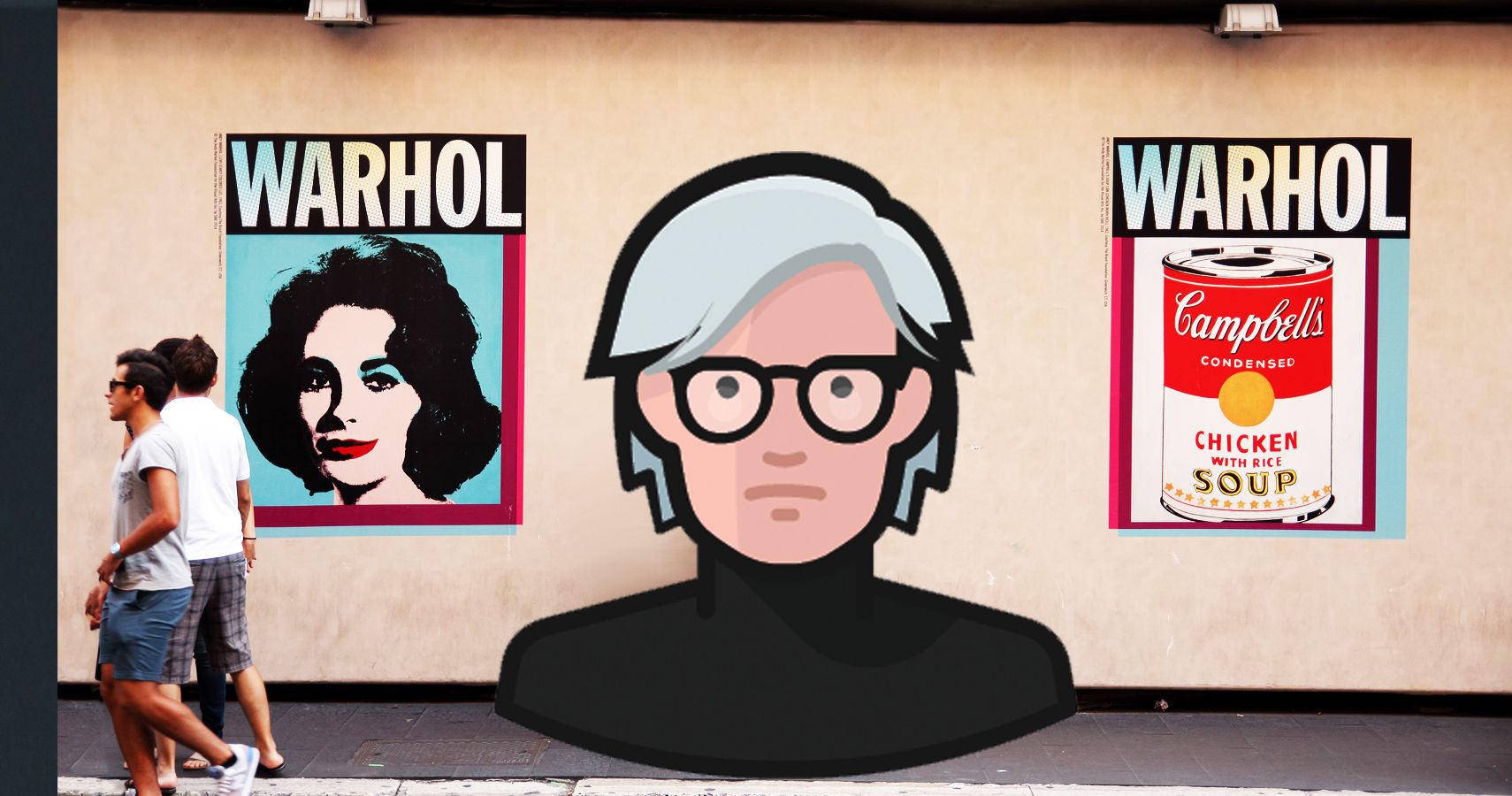Quick Links
There have been a number of twentieth century artists to infiltrate the zeitgeist of our creative culture: Jean-Michel Basquiat, Frida Kahlo, Jackson Pollock to name just a few. These are prominent fixtures in the art world who's body of work has shaped the lens in which art is seen through in today's culture.
But, out of all these brilliant minds, one stands out as the pinnacle of success and worldwide acclaim. He became a household name, even curating his own creative movement, without even breaking a sweat. This revolutionary is of course none other than Andy Warhol.
You'd be hard pressed to think of anyone whose made even the slightest amount of an impact on pop culture as he has. From the infamous 'Campbell Soup' piece to his rather strange body of filmography, Warhol stands as one of the most influential artists who has ever lived.
The Spark of Genius
Many know Warhol for his simplistic approach of his work, but not many know of where he got his love for art from.
When he was eight years old, the soon to icon spent several month bedridden in his Pittsburg home after contracting a disease called Chorea. His mother, a Slovakian immigrant named Julia, couldn't bare to see her son wither away before for her eyes. So, she began giving him art lessons. It didn't take long for the young Warhol to be enthralled by the act of artmaking, and it soon became his #1 hobby.
When he regained his health, he began attending free arts classes at the Carnegie Institute after school. After completing high school, he chose to pursue a career in the arts by enrolling into the Carnegie Institute for Technology, where he studied commercial art in 1945. Though, he found himself struggling to produce work that his professors approved of, he ended up graduating in 1948. It's speculated that this was around the time when he received his first publication. He illustrated the cover page of the school's student art magazine, Cano.
The King of NYC
After graduating college, Warhol moved to New York City to work as a commercial illustrator. His first job was illustrating shoes for Glamor Magazine. This is where he got his first of many big breaks. He was tasked by the publication to illustrate shoes for their upcoming feature called Climbing the Ladder of Success. According to Minnie Muse, his work made such a great impression that he was assigned six extra pages to work on. When he was credited for the drawings, his last name was misspelled "Warhol" and the name stuck for good.
Warhol began receiving a great deal of recognition throughout the fifties for his work outside of Glamor as he started to fine tune his attention towards painting. Warhol went on to illustrate for many other esteemed publications such as Columbia Records, Harper’s Bazaar, and Tiffany & Co. He started getting all kinds of accolades for his work and soon introduced the world to the movement we now know as 'pop art'.
But everything changed when he released his most renowned and equally controversial piece, 'Canned Soup Cans'. The piece was just that, a repeating of soup cans.
"I used to drink it. I used to have the same lunch every day, for 20 years," Warhol says about the cans, "I wanted to paint nothing. I was looking for something that was the essence of nothing, and that was it."
Filmmaker and Music Producer
Soon, as the sixties rolled around, the icon had turned his attention towards a new medium: film.
Stationed in his legendary, silver tinted workshop dubbed 'The Factory', Warhol used his Bolex camera to capture the world around him through his experimental lens of vision. Among his most notable works are an eight hour long shot of the Empire State building called Empire (1963), Batman Dracula (1964) - a film made without the permission of DC Comics - and his most highly acclaimed piece, Chelsea Girls (1964).
Fans of rock-n-roll can thank Warhol for the birth of one of the genre's foremost influential bands, Velvet Underground. Along with being the band's producer, he gave them a great deal of recognition by featuring them in the iconic live instillation Exploding Plastic Inevitable. The band's biggest break through came when they released the album, Velvet Underground & Nico. Though the album only sold around 30,000 copies, Brian Eno stated in his 1987 LA Times piece that it was an, "enormously important record for so many people.
"I think everyone who bought one of those 30,000 copies started a band," he went on to boost.
Though Warhol died after a gallbladder surgery at the age of 58, his immense influence is still felt by artist and pop culture as a whole today. From his work being taught in arts schools across the world, to being featured in some of the most prestigious museums around, Warhol has stacked his claim on the face of pop culture. His work still goes up for auctions to this day, with historical pieces being sold for upwards of 7 figures!
Read Next: 10 Most Valuable Celebrity Art Collections
Sources: BBC, Minnie Muse, Warhol Foundation, Happy Mag

